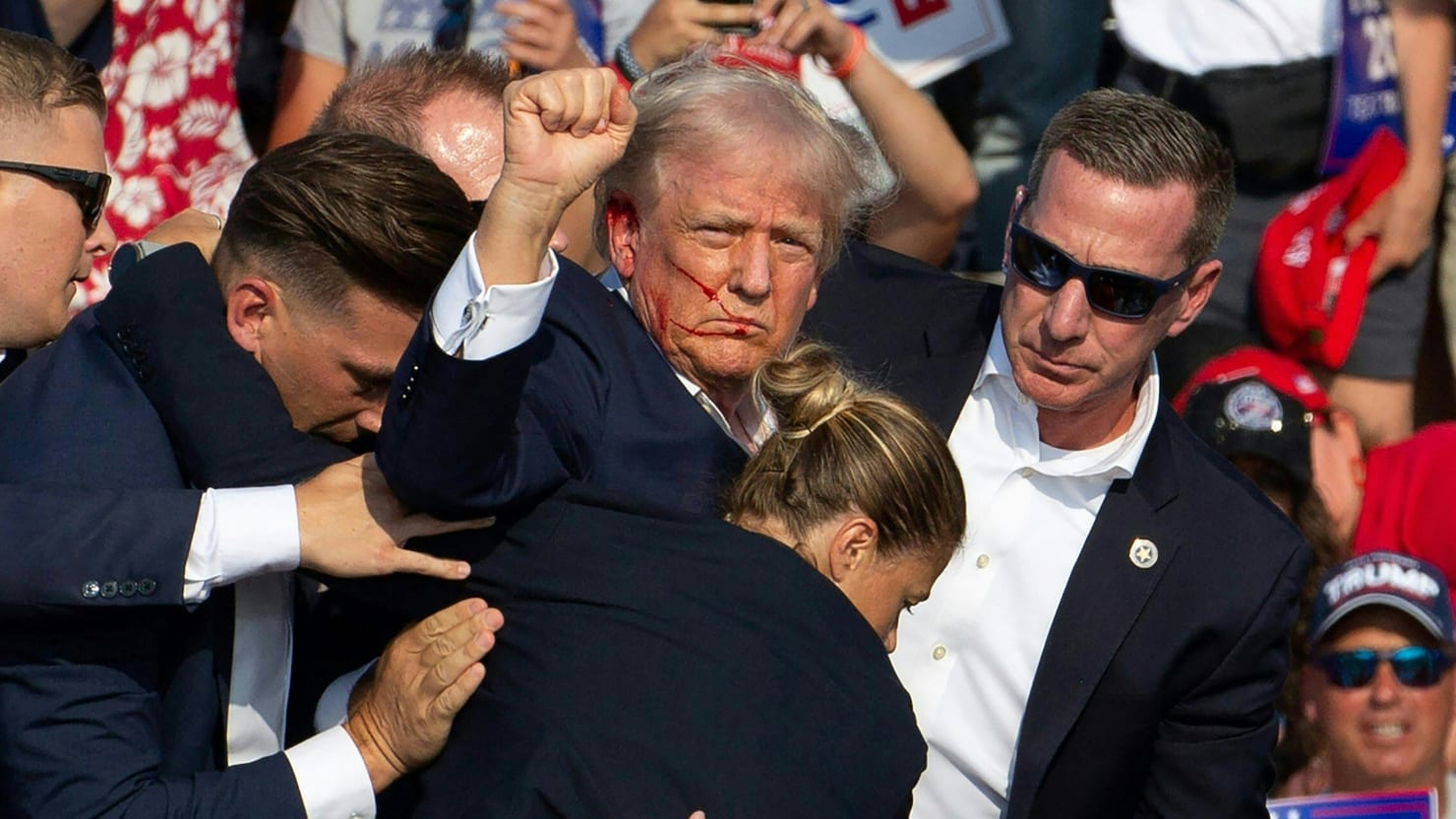The Secret Service botched its job to protect Donald Trump at a July 13 rally and is responsible for a series of stunning failures leading up to the event, according to a bipartisan Senate report released Wednesday.
Among the interim report’s findings are that the Secret Service failed to sufficiently coordinate with state and local law enforcement, failed to adequately cover the building where Trump’s attempted assassin fired from, failed to address line-of-sight concerns, denied requests for additional resources, and failed to pass on to other law enforcement that there was “credible intelligence” of a threat.
A Secret Service sniper who saw law enforcement running to the building where the shooter would fire from also failed to tell Trump’s security detail to get him off the stage, the report said.
Trump was wounded in his right ear, suggesting he narrowly avoided a catastrophic injury or worse, while 50-year-old firefighter Corey Comperatore was killed while shielding his family from gunfire in the worst Secret Service failure since Ronald Reagan was shot in 1981.
“What happened here was really an accumulation of errors that produced a perfect storm of stunning failure,” Sen. Richard Blumenthal (D-NY) told reporters. “A lot of these individual failings, if corrected at the time, might have prevented this tragedy. And, clearly, it was a tragedy. A man died, a former president was almost killed, and it was completely preventable from the outset.”
The report called the Secret Service’s failures “foreseeable, preventable, and directly related to the events resulting in the assassination attempt that day,” and raised alarm that communications and coordination problems between federal, state, and local law enforcement officials that contributed to the assassination attempt still haven’t been addressed.
Secret Service personnel, meanwhile, denied responsibility or tried to deflect blame when pressed about their individual roles, according to the report.
Perhaps the most notable finding of the committee was that the Secret Service did not secure the building where gunman Thomas Crooks climbed to the roof with an AR-style rifle even though local law enforcement had informed them they didn’t have enough personnel to adequately cover it.
Leaving the building lightly guarded at best allowed Crooks to get into position, but even when law enforcement spotted him with a rangefinder around the building and raised red flags, the information wasn’t fully acted upon, the report said.
At 5:45 p.m., the Secret Service counter sniper team leader received text messages from a local sniper that included two pictures of Crooks, whose identity was not known at the time. “Kid learning around building we are in,” they wrote. “I did see him with a range finder looking towards stage. FYI. If you wanna notify SS snipers to look out. I lost sight of him. Also a bike with backpack sitting next to it in rear of building that was not seen earlier.” He then passed on the info to the Secret Service snipers at the rally in an email at 5:52 p.m.

Senate Commitee on Homeland Security and Governmental Affairs
One of the members of the Hercules 2 Secret Service sniper team told the committee they then searched and observed the site, but their view was obstructed by a tree line—another planning error cited in the report. The sniper nevertheless was able to make out that a person who emerged from the tree line was a police officer who looked like they were moving urgently. He radioed his colleagues.
After hearing the radio transmission, the Secret Service counter sniper team leader and his partner, sniper team Hercules, 1 both repositioned themselves to face the building where Crooks was after hearing the transmission.
“You could see police running towards the building with their hands on their pistols,” he told the committee. “I think one actually had a pistol facing towards the ground, out of a holster. That’s a pretty big deal for us, so immediately we turned and faced our guns towards the threat area. We didn’t know what was happening, but it seemed pretty serious, especially with the locals’ response.”
The team leader did not, however, radio this information to anyone, including the Trump detail, which could have removed him from the stage where he was speaking.
“We didn’t know what we were working with” was the team leader’s explanation. “Obviously, police are running towards a situation. That could be anything from a medical situation to potentially a man with a gun or some sort of violent situation.”
The attempted assassination happened just minutes later, at 6:11 p.m.
The Senate report highlights a host of other specified concerns. The Secret Service special agent overseeing the Pittsburgh field office did not have a working radio at the rally because he gave his to the lead advance agent, whose radio was malfunctioning.
Another Secret Service official, whose job was to track unauthorized drones, said his requests for more equipment and personnel were denied. Trump’s Secret Service detail also made a handful of requests that were denied.
A separate House task force on the assassination attempt is set to hold its first public hearing on Thursday.




![Tyson Foods Plant [Photo: Food Manufacturing]](https://southarkansassun.com/wp-content/uploads/2023/08/iStock_1185520857__1_.5e441daa51cca-600x337.jpg)







![Silverado Senior Living Management Inc. [Photo: Los Angeles Times]](https://southarkansassun.com/wp-content/uploads/2023/10/download-6-4-600x337.jpg)

![China's Wuhan Institute of Virology [Photo: Nature]](https://southarkansassun.com/wp-content/uploads/2023/09/d41586-021-01529-3_19239608-600x337.jpg)
















